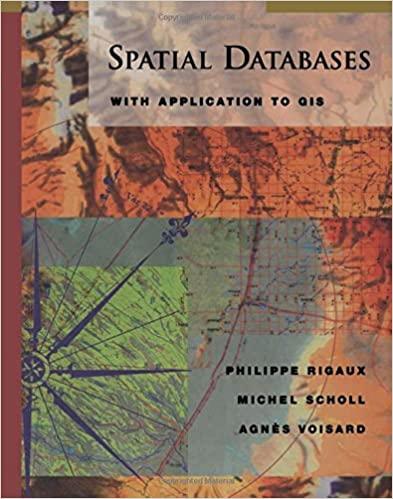Question
I need some help writing this code: The Mandelbrot Set The Mandelbrot set is a set of all complex numbers that satisfy the following condition:
I need some help writing this code:
The Mandelbrot Set
The Mandelbrot set is a set of all complex numbers that satisfy the following condition: if a complex number c in the Madelbrot set, the absolute value of mandelbrot(n) remains bounded when n (a natural number 0, 1, 2, ...) tends to infinity, where
mandelbrot(n) = mandelbrot(n-1)*mandelbrot(n-1) + c; mandelbrot(0) = c.
Here the addition and multiplication are complex number addition and multiplication.
Specifically, for our project, if the absolute value of mandelbrot(15), |mandelbrot(15)|, is smaller than 10000 for a given c, then c is in the Mandelbrot set. If we consider a c as a 2D coordinates on a plane, the points in the area from (-2.0, -1.12) to (0.47, 1.12) will contain the Mandelbrot set. Our goal is to calculate an array of points that covers the Mandelbrot set in this area and display the array. If a point is in the Mandelbrot set, we display a 1 (or #); otherwise, we display a 0 (or an empty space). You may save the area in a file so the area may contain many more points beyond your display.
Implementation
implement the recursive function "complex_t mandelbrot(int n)". In general, you should avoid using global variables, so the recursive function has to carry another input value, c, and mandelbrot(c, n) checks whether c belongs to the Mandelbrot set. In other words, your function should be mandelbrot(complex_t c, int n) instead. Optionally, for the purpose of learning, you may define a global variable c in mandelbrot.c, and use extern in mandelbrot.h to make it visible in main.c, so you can just use mandelbrot(n).
Also, mandelbrot(n) uses complex number addition and multiplication, so you should include "complex.h" in mandelbrot.c to allow mandelbrot(n) to access complex functions. In the recursive function, |mandelbrot(n)| can be quite large beyond the computers representation. Therefore, in the recursion, if |mandelbrot(n-1)| is bigger than 10000, your recursion should consider that it is not bounded already, so you return mandelbrot(n) = (10000, 10000) instead of the calculated number to indicate that current c is not in the Mandelbrot set already. Also, in the recursion, mandelbrot(n-1) is calculated twice, which is really wasting effort, so you should just calculate it once for efficiency.
Third, in order for main.c to see the recursive function and c, you need to include "mandelbrot.h". Because you use complex numbers in main.c, you need to include "complex.h" in main.c as well.
In main.c, for all point c in the area from (-2.0, -1.12) to (0.47, 1.12), we can check the corresponding mandelbrot(15) to see if it is in the Mandelbrot set. If it is in the set, which means that |mandelbrot(15)| is smaller than 10000, we print a '1' or '#'; otherwise, we print a '0' or ' '(an empty space). Therefore, we can actually print an image of the Mandelbrot set. For example, you can check 40*30 points with a double for loop in a rectangular area. That is, we start in x direction from -2.0 with step size (0.47-(-2))/40 = 0.06175 to 0.47, and in y direction from -1.12 with step size (1.12-(-1.12))/30 = 0.077 to 1.12. You may notice that this arrangement will be an up-side-down image, but the image is symmetric, so we can ignore this problem. You can google images on Mandelbrot, and see the Mandelbrot set images with very fine points at the screen resolution with vivid colors.
The final executable is called mandelbrot. Make sure your Makefile will compile and generate the three object files, and link them together with correct dependencies.
Step by Step Solution
There are 3 Steps involved in it
Step: 1

Get Instant Access to Expert-Tailored Solutions
See step-by-step solutions with expert insights and AI powered tools for academic success
Step: 2

Step: 3

Ace Your Homework with AI
Get the answers you need in no time with our AI-driven, step-by-step assistance
Get Started


